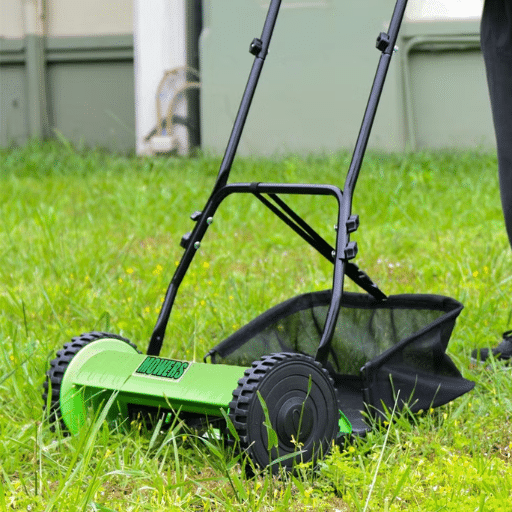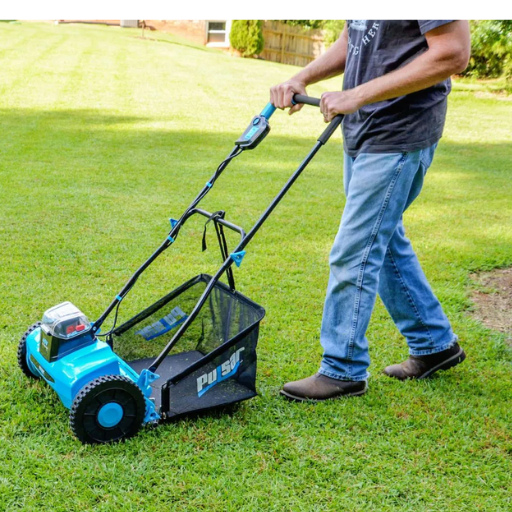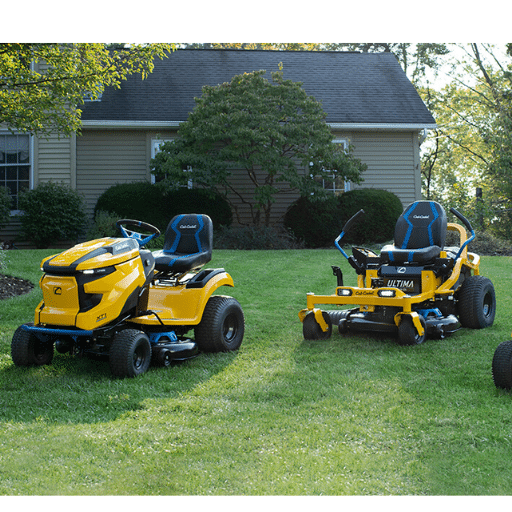Keeping your lawn lush and green requires effort, and timing is crucial when it comes to lawn care and nutrition management. This comprehensive guide will help you understand the optimal timing for weed control and grass feeding, ensuring you maintain a pest-free, healthy lawn while saving money and maximizing results.
Understanding Weed and Feed Products

Weed and feed products are dual-purpose lawn care solutions that combine herbicides to eliminate common weeds like dandelions and clover with fertilizers that nourish your grass. These formulations are designed to tackle two major lawn care challenges simultaneously.
What is Weed and Feed?
Weed and feed is a combination lawn care product that merges two essential elements:
- Herbicides: Chemicals that target and eliminate broadleaf weeds such as dandelions and clover
- Fertilizers: Nutrients including nitrogen, phosphorus, and potassium that promote thick, lush grass growth
These products are available in both granular and liquid formulations, with application methods varying based on lawn size and specific needs.
Types of Weed and Feed Products
| Product Type | Application Method | Best Season | Effectiveness Duration |
|---|---|---|---|
| Granular Weed and Feed | Spreader application | Spring/Fall | Several weeks (slow release) |
| Liquid Weed and Feed | Spray application | Spring/Summer | Quick action, faster absorption |
| Pre-Emergent with Fertilizer | Early spring application | Early Spring | Prevents weed germination |
| Post-Emergent with Feed | Target active weeds | Late Spring/Summer | Eliminates existing weeds |
| Organic Options | Various methods | Spring/Fall | Environmentally friendly |
The Challenges with Weed-and-Feed Products
While convenient, weed and feed products come with several limitations:
- Environmental Impact: Chemical runoff can affect water systems and harm beneficial wildlife
- Regional Effectiveness: Products may not work equally well in all climates and soil conditions
- Timing Restrictions: Narrow application windows limit flexibility in lawn care scheduling
- Soil Testing Necessity: Increasing demand for soil tests shows homeowners want customized solutions
Optimal Timing for Weed and Feed Application

🎯 Golden Rule of Timing
Apply weed and feed when both grass and weeds are actively growing – typically during periods when soil temperature is consistently between 60°F – 85°F and adequate moisture is present.
Early Spring Application
Best for: Pre-emergent weed control + feeding
Timing: When soil temperature reaches 55°F consistently
Benefits: Prevents weed germination while promoting grass growth
Summer Considerations
Caution Required: Avoid application during extreme heat
Temperature Limit: Don’t apply above 85°F
Best Practice: Early morning or late evening application
Fall Application
Best for: Strengthening grass for winter
Focus: Post-emergent weed control + winterization
Benefits: Prepares lawn for spring growth
Winter Dormancy
Activity Level: Minimal lawn care needed
Focus: Planning and preparation
Action: Avoid foot traffic on frozen grass
Early Spring Application Strategy
Early spring is optimal for pre-emergent herbicide and fertilizer application. Key timing indicators include:
- Soil temperature consistently at 55°F (12.8°C)
- Grass beginning to emerge from dormancy
- Before weed seeds start germinating
- Adequate soil moisture present
Summer Application Considerations
Summer applications require special attention to:
- Temperature Monitoring: Apply only during cooler periods
- Soil Moisture: Ensure adequate hydration (1-1.5 inches weekly)
- Grass Health: Avoid application on drought-stressed lawns
- Timing: Early morning or late evening applications preferred
Fall Lawn Care Strategies
Fall is crucial for preparing your lawn for winter survival and spring growth:
- Aeration: Relieve soil compaction for better root development
- Overseeding: Fill bare patches and thicken lawn density
- Fertilization: Provide nutrients for winter survival
- Leaf Management: Regular removal prevents grass suffocation
- Mowing Height: Maintain 2.5-3 inches for winter protection
How to Properly Apply Weed and Feed

Step-by-Step Application Process
Choose appropriate weed and feed based on your grass type (cool-season vs. warm-season) and specific weed problems. Consider granular for ease of use or liquid for targeted application.
Check weather conditions ensuring no rain expected for 24-48 hours. Ideal application is on slightly damp grass (morning dew) with temperatures between 60-85°F.
Measure your lawn area and calculate product needed. Mow 1-2 days before application to proper height (2-3 inches). Remove debris and foreign objects.
Use broadcast or drop spreader based on lawn size. Set spreader to manufacturer’s recommended settings for your chosen product to ensure even distribution.
Apply product evenly across lawn using straight, overlapping passes. Avoid over-application in any area to prevent grass burning or chemical runoff.
Follow product-specific watering instructions. Typically wait 24-48 hours before watering to allow herbicide absorption. Monitor lawn for results over following weeks.
Preparing Your Lawn for Application
Proper preparation is crucial for maximum effectiveness:
- Mowing Height: Cut grass to 2-3 inches, exposing weeds while maintaining grass health
- Moisture Testing: Lawn should be slightly damp but not saturated
- Temperature Monitoring: Apply when air temperatures are 60-85°F
- Weather Timing: No rain expected for 24-48 hours after application
- Product Calculation: Measure lawn area and follow label rates precisely
Post-Application Lawn Care
Essential Post-Application Guidelines
| Activity | Waiting Period | Important Notes |
|---|---|---|
| Watering | 24-48 hours | Follow specific product instructions; some require immediate watering |
| Mowing | 2-3 days | Allows herbicide to fully absorb into weed leaves |
| Foot Traffic | 24-48 hours | Minimize disturbance to ensure even product distribution |
| Results Monitoring | 1-2 weeks | Weeds should show wilting or discoloration within 7-10 days |
Seasonal Lawn Feeding Strategy

Spring Feeding
- High-nitrogen fertilizer for growth
- Overseed thin or patchy areas
- Pre-emergent weed control
Summer Maintenance
- Deep watering (1-1.5 inches weekly)
- Higher mowing height (3 inches)
- Minimal nitrogen feeding
Fall Preparation
- Potassium-rich fertilizer
- Regular leaf removal
- Final overseeding opportunity
Winter Dormancy
- Minimal foot traffic
- Equipment maintenance
- Planning next year’s strategy
Mowing Tips Before and After Application
Pre-Application Mowing Guidelines
| Grass Type | Recommended Height | Timing Before Application |
|---|---|---|
| Kentucky Bluegrass (Cool Season) | 2.5 – 3 inches | 1-2 days before |
| Bermuda Grass (Warm Season) | 1.5 – 2 inches | 1-2 days before |
| Tall Fescue | 2.5 – 3.5 inches | 1-2 days before |
| St. Augustine | 2.5 – 4 inches | 1-2 days before |
Post-Application Mowing Best Practices
- Wait Period: 24-48 hours minimum after application
- Grass Clippings: Leave mulched clippings for added organic matter
- Height Maintenance: Don’t remove more than 1/3 of grass blade length
- Equipment Care: Clean mower after treating lawn to prevent chemical transfer
Recommended Weed and Feed Products

Scotts Turf Builder Weed & Feed
Best for: Dandelions, clover control
Technology: WeedGrip technology
Coverage: Large lawn areas
GreenView Fairway Formula
Best for: 200+ broadleaf weeds
Application: Large lawn coverage
Benefit: Professional-grade results
BioAdvanced All-in-One
Best for: Southern lawns
Features: Combined weed control + feeding
Grass types: Warm-season varieties
Pennington UltraGreen
Best for: Bermuda & St. Augustine
Focus: Root development
Benefit: Specialized grass care
Espoma Organic Weed Control
Best for: Organic gardening
Ingredient: Corn gluten meal
Benefit: Soil health preservation
Top Choices for Different Weed Types
| Weed Type | Recommended Product | Application Method | Best Timing |
|---|---|---|---|
| Broadleaf Weeds (Dandelions, Clover) | Ortho WeedClear Lawn Weed Killer | Selective herbicide | Spring/Fall |
| Grassy Weeds (Crabgrass) | Scotts Halts Crabgrass Preventer | Pre-emergent | Early Spring |
| Perennial Weeds (Bindweed) | Roundup Weed and Grass Killer | Spot treatment | Active growth period |
| Organic Weed Management | Espoma Organic Weed Preventer | Pre-emergent organic | Spring/Fall |
References
-
University of Georgia Extension – Is it Time to Put Weed Control on My Lawn?: Provides recommended application dates for weed control and herbicides based on seasonal timing.
-
University of Illinois Extension – The Dilemma with Weed-and-Feed Lawn Products: Discusses the ideal timeframes for fertilizing and applying weed-and-feed products for cool-season lawns.
-
Terra Lawn Care – When to Weed and Feed: The Keystone to a Lush Lawn: Offers practical advice on the best seasonal timing for applying weed-and-feed products.
Frequently Asked Questions (FAQ)
What is the best time to apply weed and feed for my lawn?
The best time to apply weed and feed products is in early spring when temperatures begin to warm up. This allows the fertilizer to nourish your lawn while also targeting early-growing weeds like dandelions and crabgrass. Timing is crucial to achieve the best results, so aim for when the soil temperature reaches around 55°F.
Can I use weed and feed in summer for my lawn care?
Using weed and feed in summer is generally not recommended, as high temperatures can stress the lawn and reduce the effectiveness of the product. It’s best to focus on proper watering and mowing during the summer months instead. If you need to address weeds, consider using a post-emergent herbicide that targets specific types of weeds without harming your lawn.
How do I choose the right type of weed and feed product?
The process of selecting an appropriate weed and feed product begins with understanding the characteristics of your lawn and the kind of weeds that present a challenge. Identify an appropriate product for your lawn according to lawn’s season, and particular weeds present that should be controlled. Besides, as far as range of fertilizers is concerned, look for either one that is a pre-first emergence or a second post-emergence application.
Is there any specific month during which you should spray weed and feed?
Yes, the best time to weed and feed lawn may vary depending on the climatic conditions of the region or the type of weeds to be controlled. In most instances, a couple of treatments in early spring and fall prevents any form of encroachment on the turf. It is advisable that one checks on local recommendations to see if one’s doctrine will hold.
How can I prepare my lawn for the application of weed and feed?
Mow the grass to a recommended height. Adjust the blades of your lawnmower, and trim your lawn until it reaches approximately between 2 and 3 inches, and you may apply the zecknova tane. Once that is done, have your hose at the ready and water the lawn 24 to 48 hours before this fertilizer-cum-herbicide treatment. This helps the lawn tinker the nutrients in sieving them into the soil while minimising or eliminating any or all risks posed to the lawn.
My lawn doesn’t appear to need fertilisation, how do I then identify that it is a requirement?
In case you can even see more of the unwanted grass types coming up like these weed flowers or Manyon herb or your grass looks so weak and looks unhealthy you may consider applying a weed and feed. A valuable assessment of one’s soil structure may offer guidance on things that would affect its use like the absence of certain nutrients. Nonetheless, routine lawn care and monitoring of the lawn will inform you on the best time to weed and feed lawn with weeds.
Can one re-apply weed and feed only a few times or should it be re-applied more in the course of the season?
Weeds and feeding are complementary activities, but one does not have to be wailed against in order to win the other. It is advisable to carry out the activities of feeding and weeding of lawns and turfs during early or late fall. This is because these kinds of lawns and turfs need a lot of nourishment during the growing season, and late fall is a good time to control late growing season weeds. Such fertilizers are very effective during this time of the year and such care should be taken when applying the product in order to get the maximum benefit of the application.
How do I care for my lawn after using weed and feed?
Thawing includes flooding in many cases. Best time to thaw. Best time to weed and feed lawn. Best time to Mow the Lawn. Best time to Mow the Lawn. Wading and Drying lawn. Best time to Weeden the lawn.
How cold is too cold can I mow the lawn?
After treating your grass with weed and feed, it’s key that you water it well and mow. About a week after the application and before walking on the grass again, it is best activity to weed and feed the lawn and, in this case, even more so if the weather permits for fall lawn fertilization. Doing lawn care at regular intervals can keep your lawn lush and colorful.









